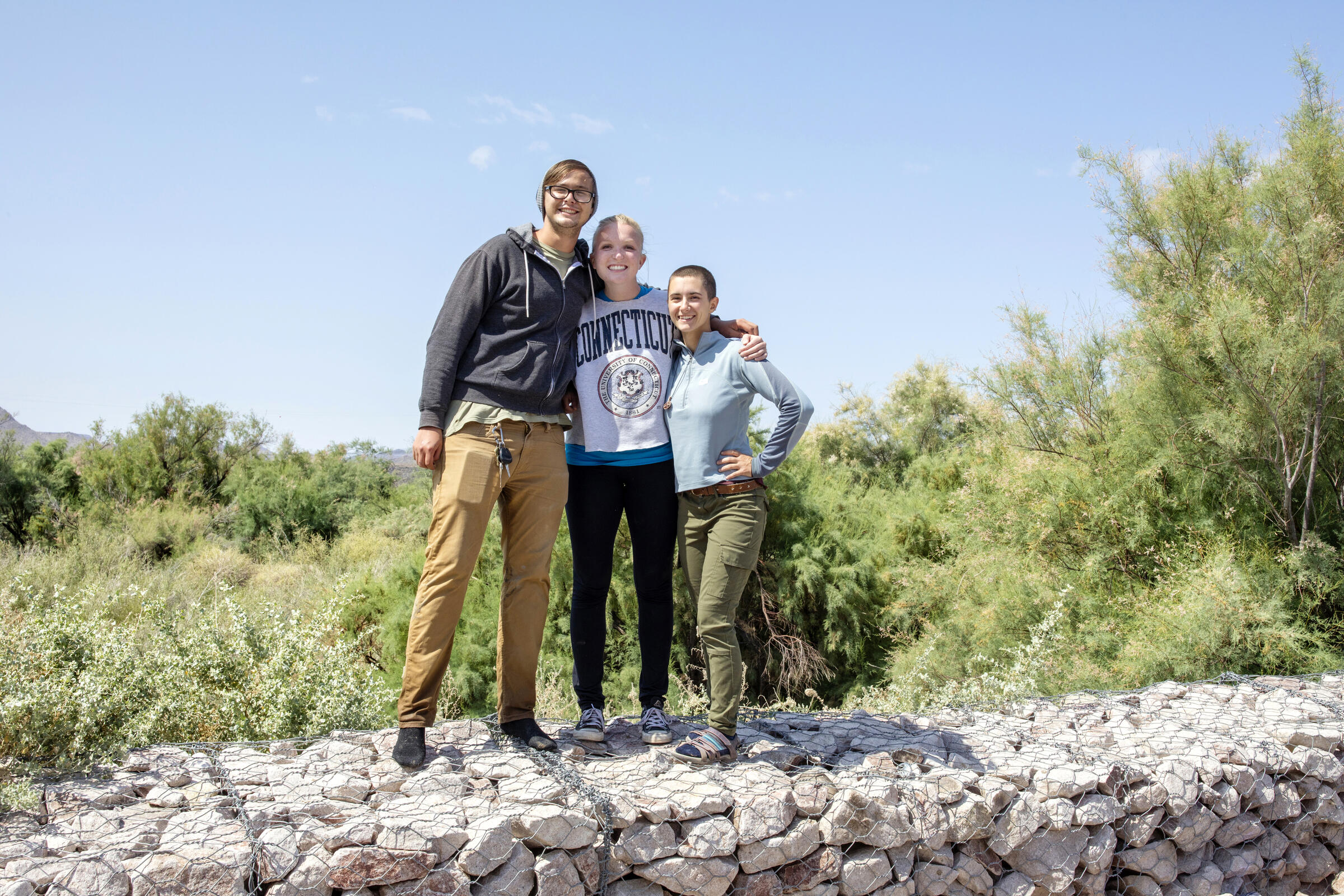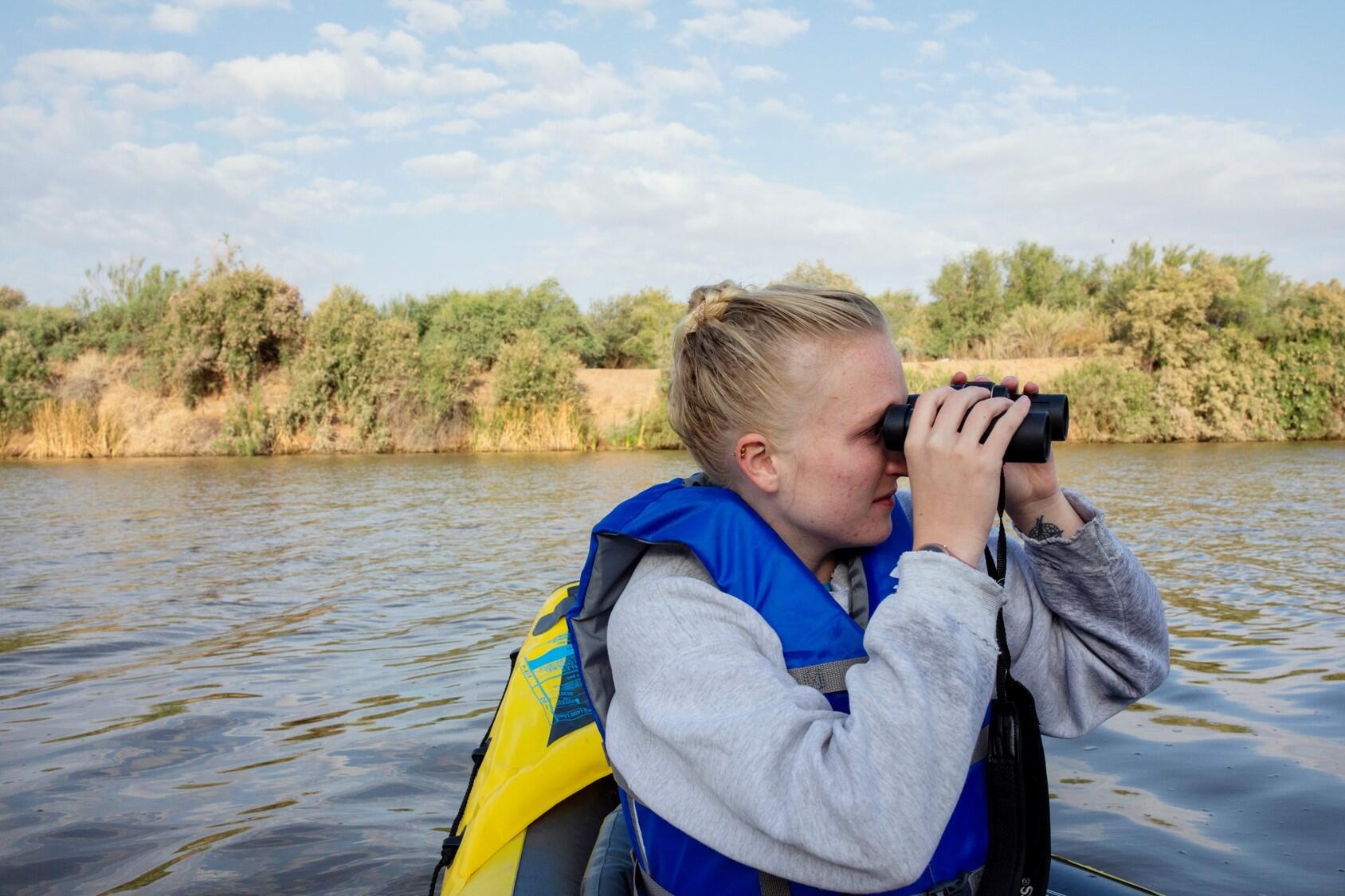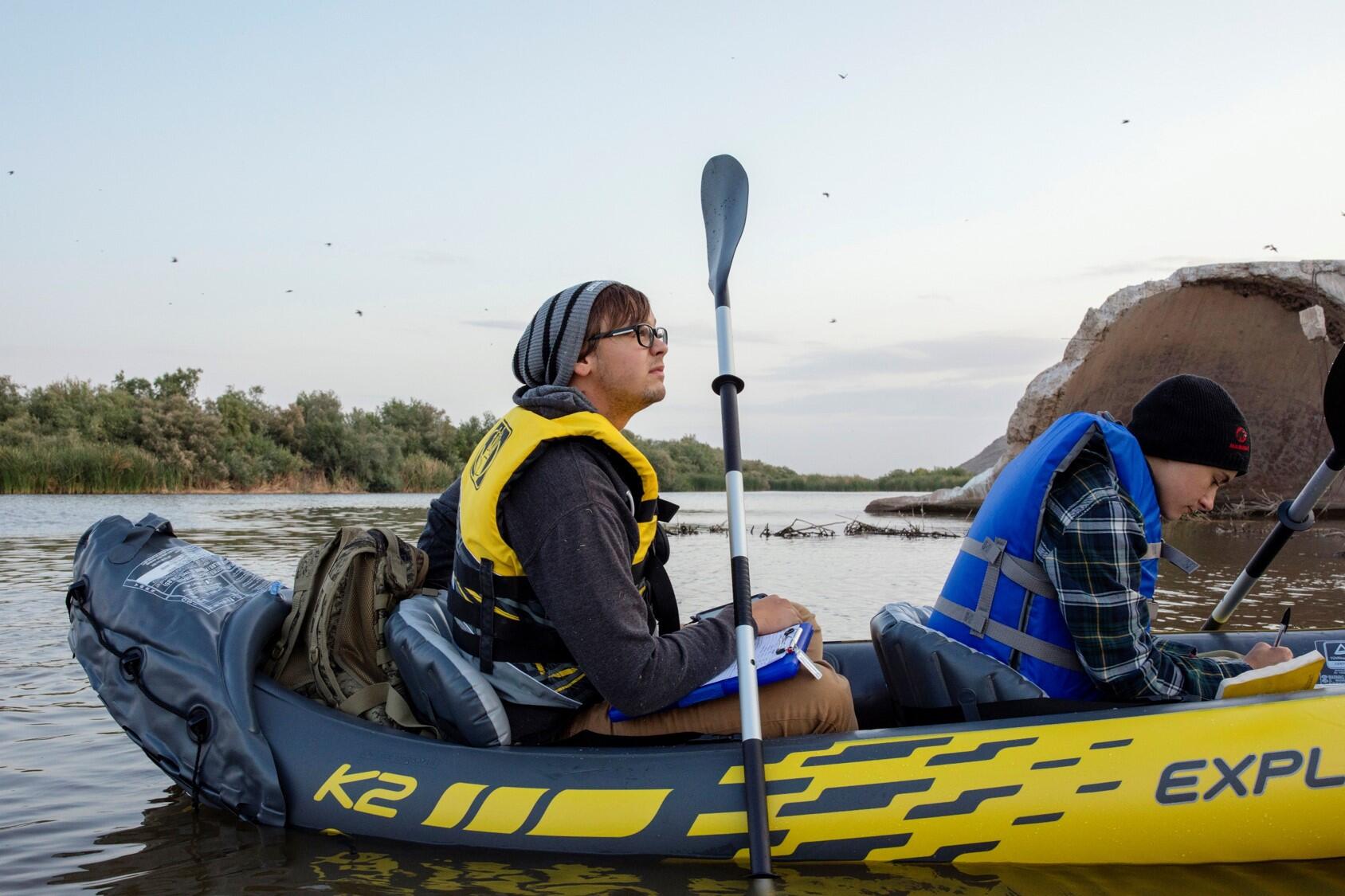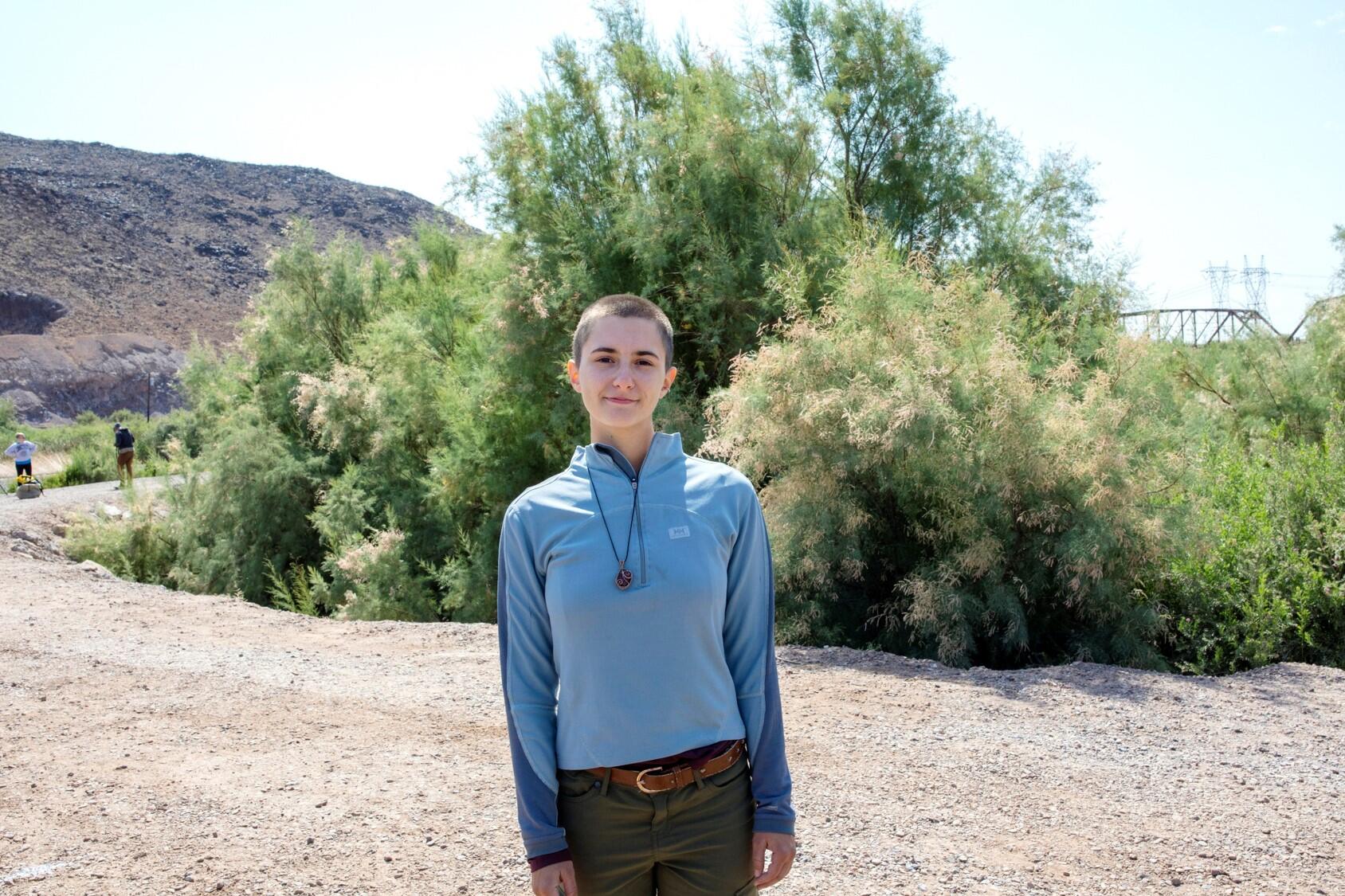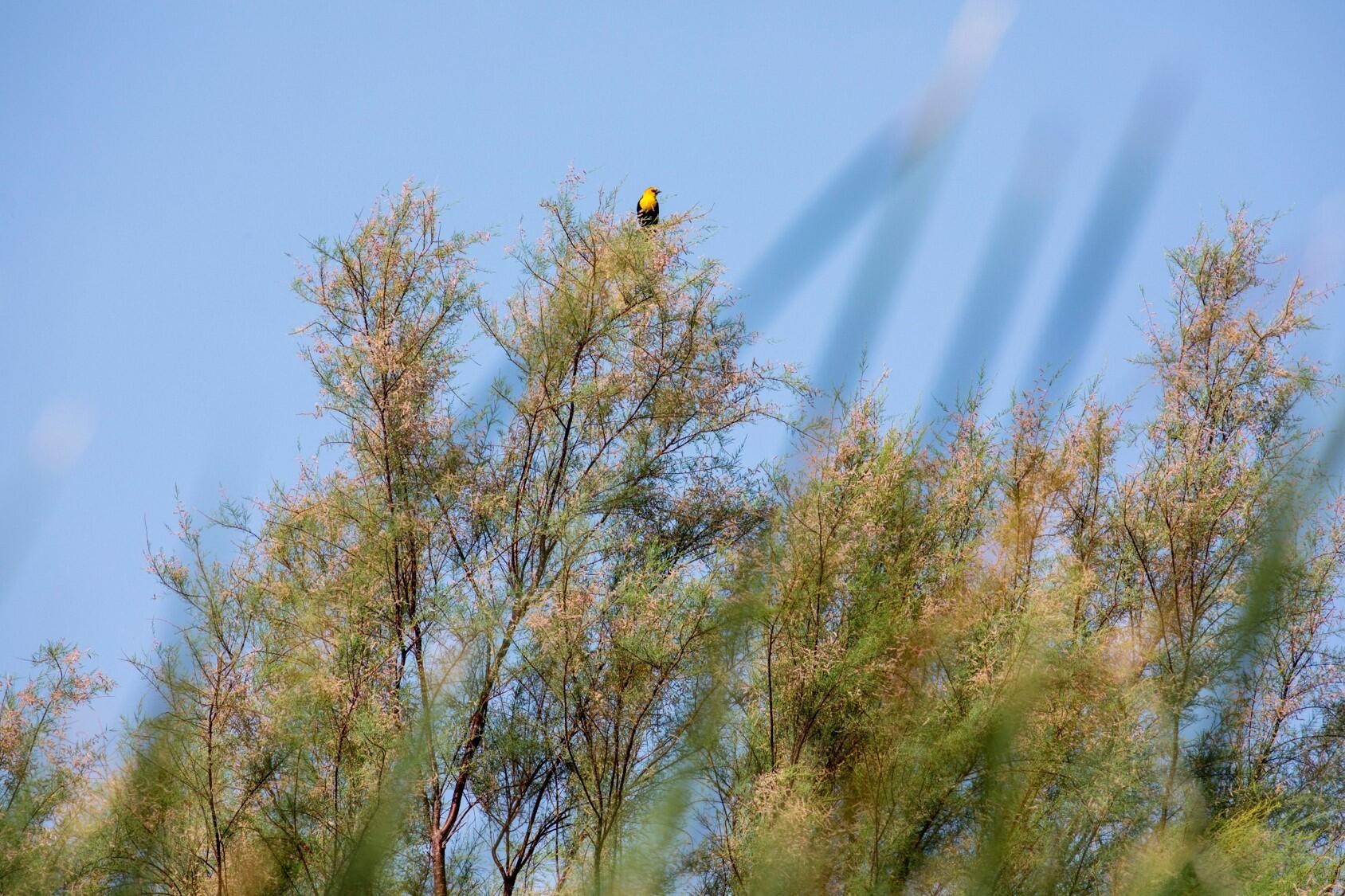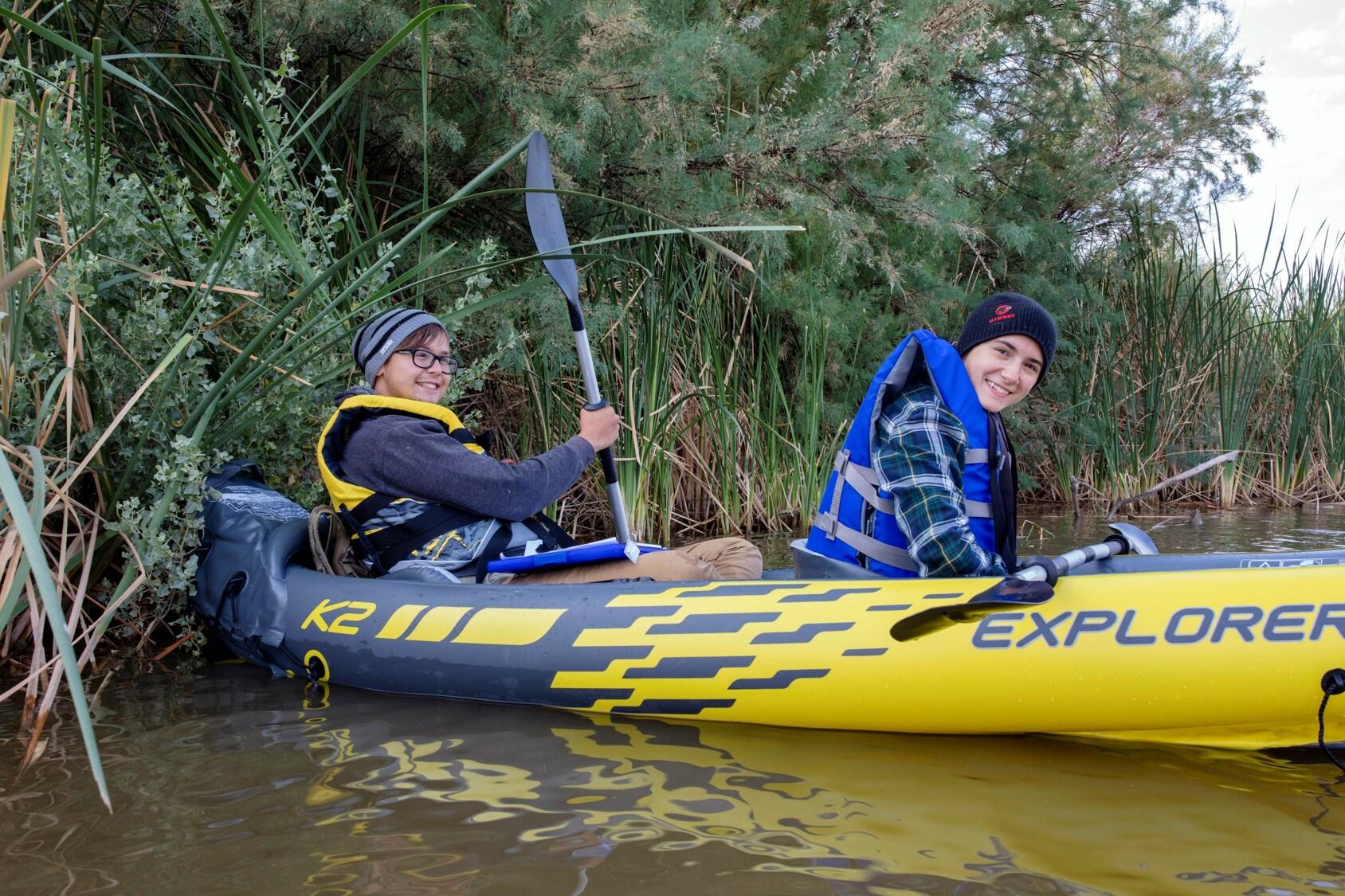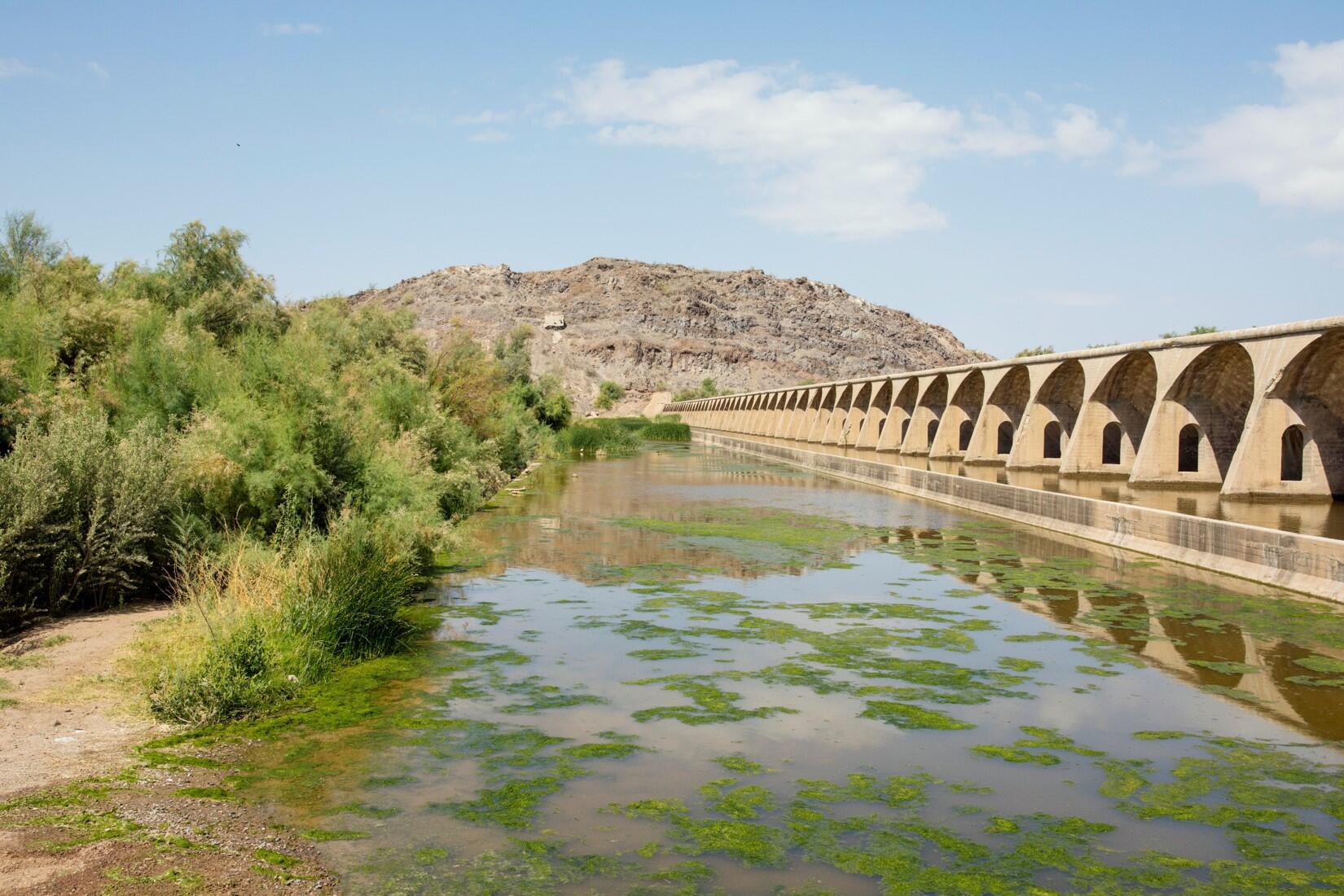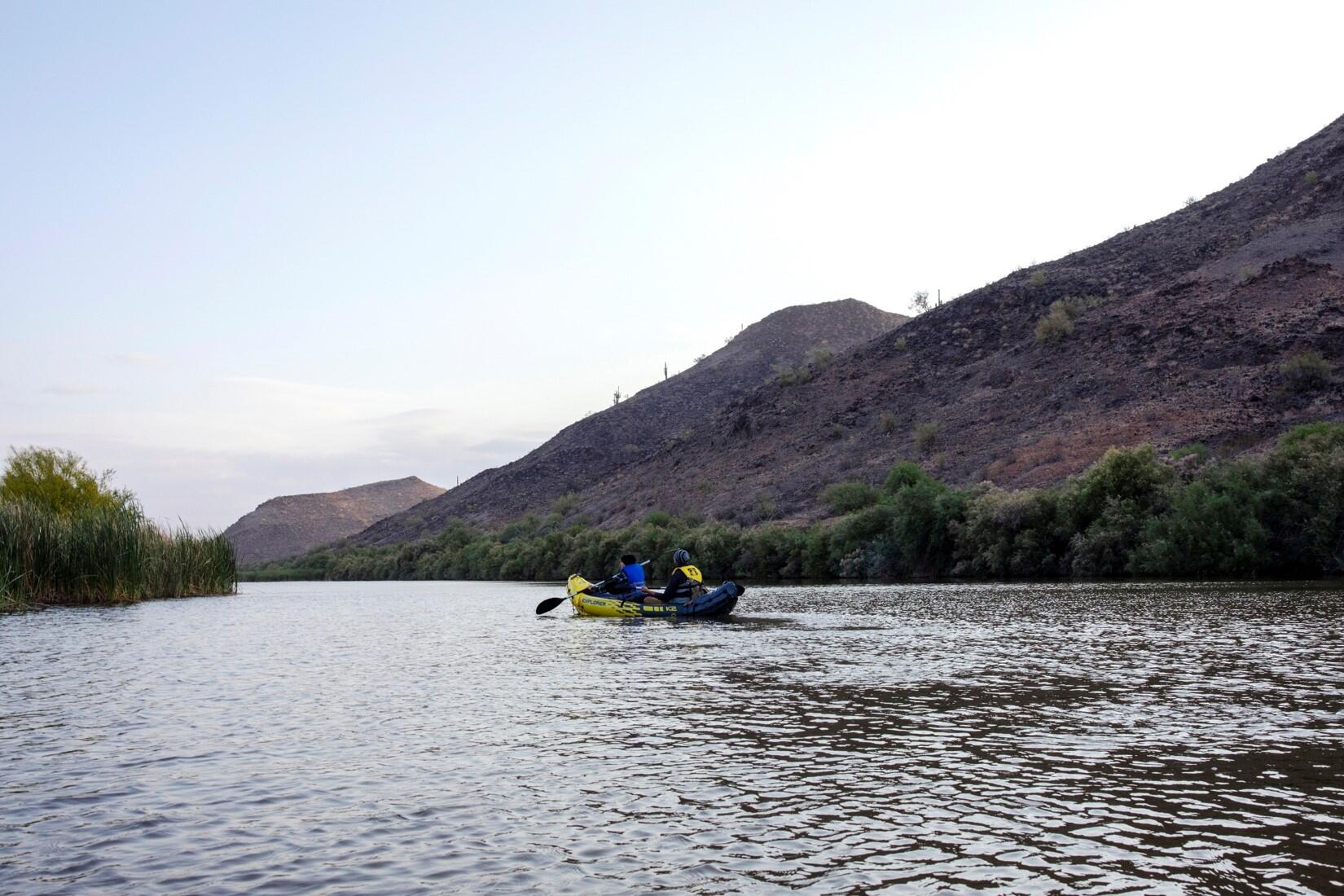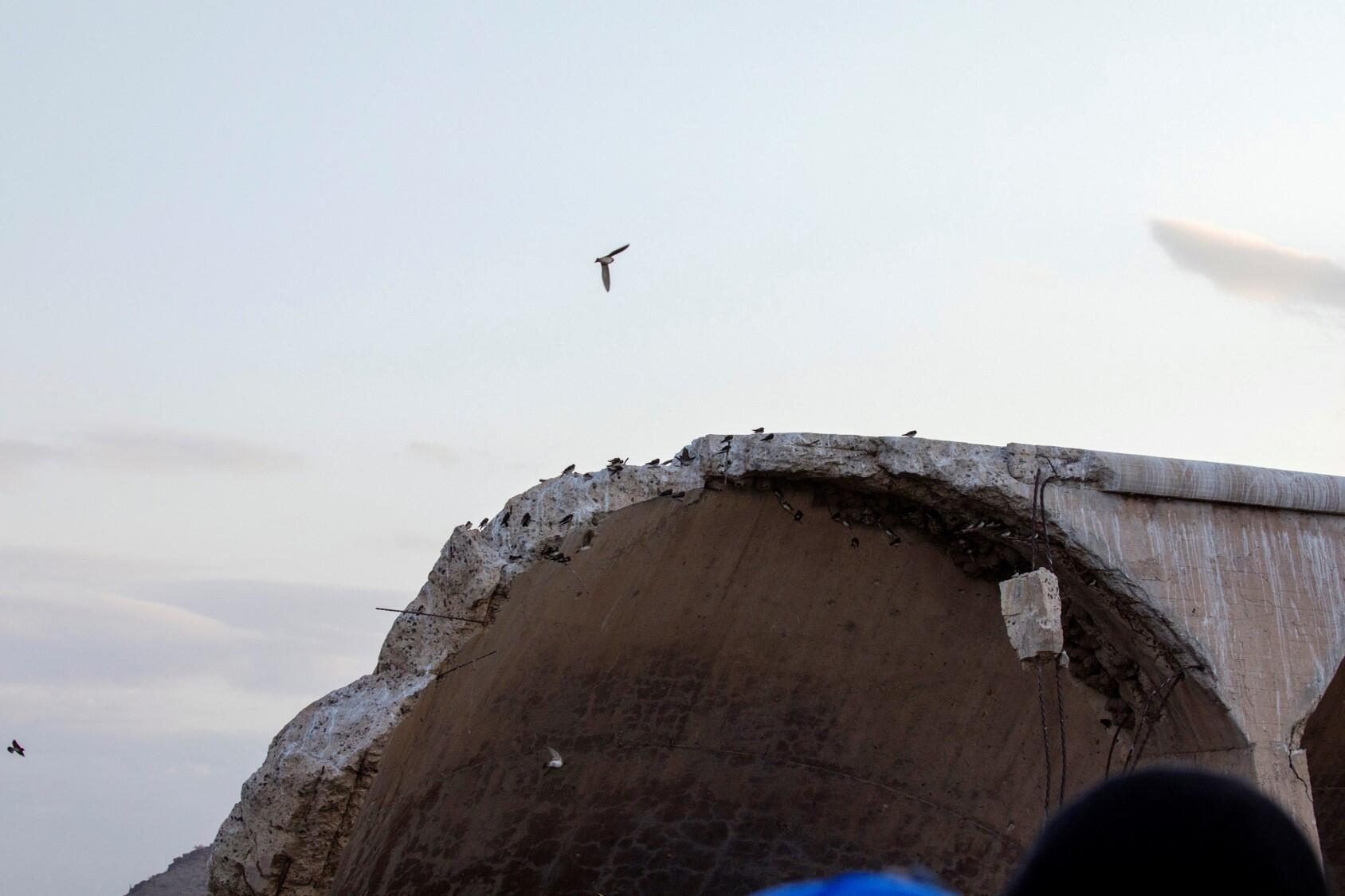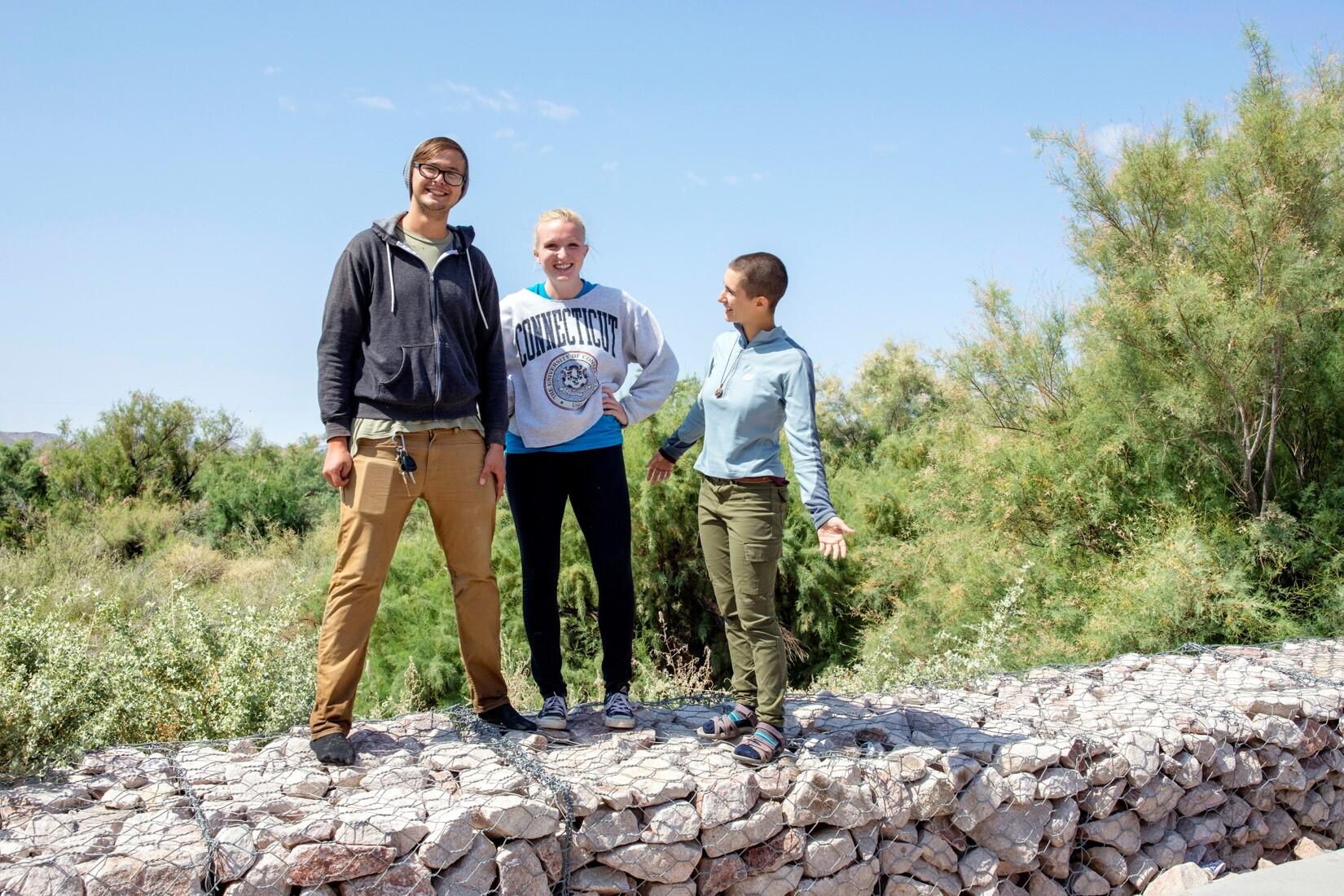"There's nothing like getting up at the crack of dawn and listening to birds."
Daniel Hite, Audubon Arizona's Conservation Outreach Assistant and Mackenzie Fellow says this during a marsh bird survey at the Gillespie Dam near Buckeye, AZ. He and Fellows Emma Laurens and Mia McGehee started their drive to the dam at 3 a.m. and surveyed in kayaks the entire morning.
A new expansion to the River Pathways program, the Mackenzie Fellowship is the culmination of a generous donor's commitment to expanding leadership opportunities for youth in conservation.
Audubon Arizona is hiring two Fellows each school semester and their primary roles are to assist Audubon biologists and educators in the field. The Fellows teach high school students, do in-class outreach programs, collect bird survey and habitat assessment data, and help lead on-the-ground conservation projects.
The Mackenzie Fellowship provides youth with leadership experience to facilitate personal growth and to cement the individual’s commitment to conserving our shared environment. Further, Audubon seeks to recruit individuals that would not have had this opportunity otherwise.
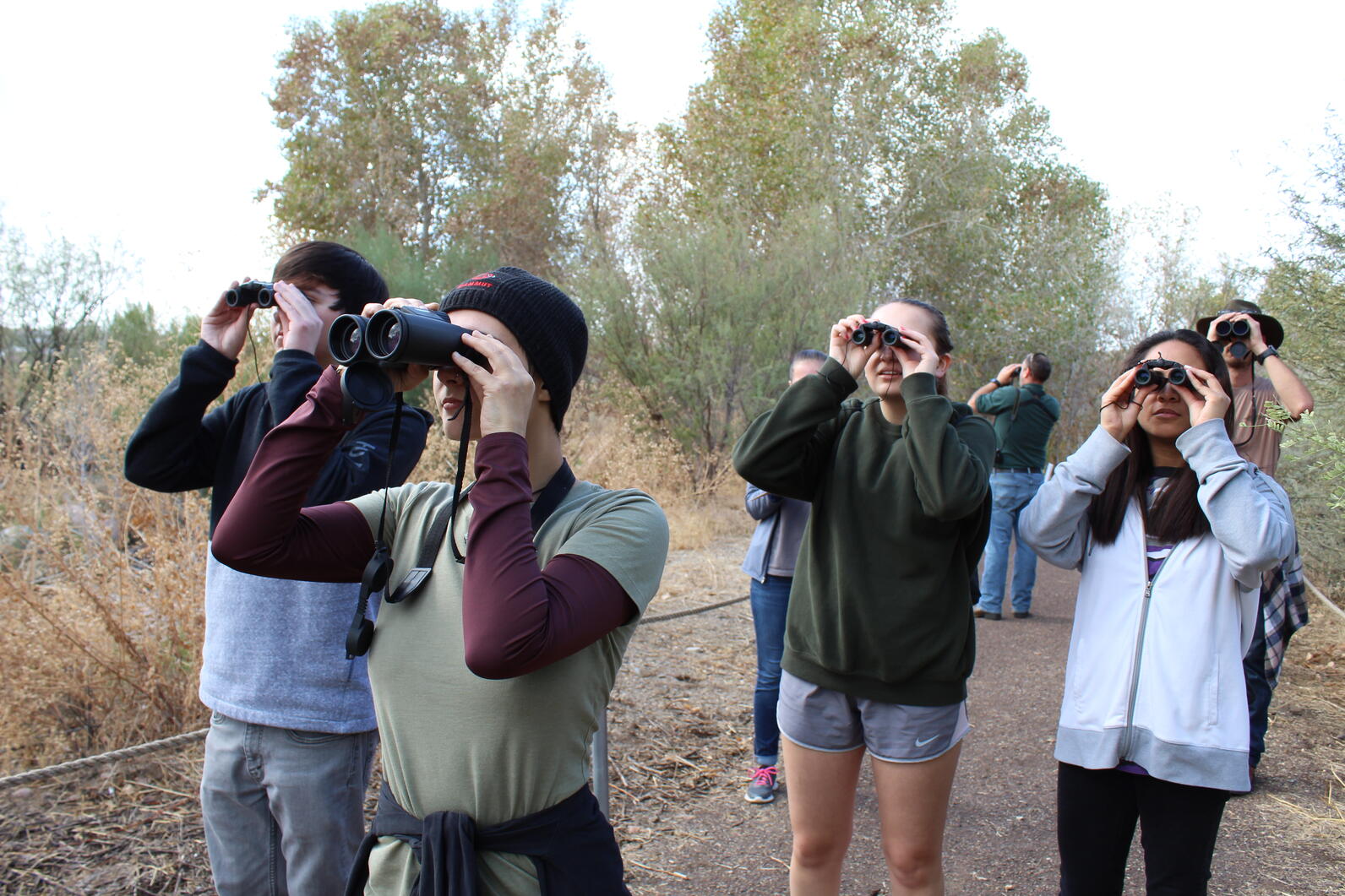
Top candidates for the Fellowship are graduates of Audubon Arizona’s River Pathways program; River Pathways delivers a river ecology curriculum developed in collaboration with the Phoenix Union High School District and designed for urban, ethnically diverse and often economically challenged neighborhoods.
River Pathways is a partnership between Audubon, the Bureau of Land Management, and the US Forest Service. The program weaves together Arizona-specific natural history information, STEM-supporting learning, and a call to conservation action—all while illustrating possible careers in resource management and providing a pathway to community college and beyond.
The ultimate goal of River Pathways has always been to have students graduate from the program, then come back and do the teaching. The cycle promotes higher interest in the pursuit of conservation careers, because students can literally see themselves in those roles.
The Mackenzie Fellowship just wrapped up its very first season. Here's a look at the very first cohort.
Audubon Arizona: Mackenzie Fellows (4 min) from Audubon.org on Vimeo.
Daniel J. Hite
The bird that most represents him: Raven
Interests: I'm just interested in nature. Especially here in Arizona. We live in such an incredibly diverse and under-appreciated place. The more I learn about it the more I want to protect it from being lost.
Current career plans: I'm currently a full-time employee at Audubon Arizona. I love what I do and I love the organization that I work for. After this, I'm not sure. Go back to school maybe-- we'll see where the future takes me.
Why he applied to be a Mackenzie Fellow: Audubon's mission and past success really inspire me to want to work for them. Educating youth and getting them involved in the outdoors is valuable for protecting places that I care about too. It’s mind-boggling to think about all the urban youth that never notice the wildlife around them on any given day or have never had the opportunity to really experience nature. This program certainly gave me that opportunity. I don’t know why anyone wouldn’t want to give that opportunity back to someone else.
Biggest surprise in the work: How much I was going to care about these places. I thought this might just be a cool internship that I did one summer and I’d be stuck at some dead end job the rest of my life. But this program really brought me to some places that took my breath away. It’s these memories and connections that inspire me to be the best that I can be and to protect the places that I care about.
Emma Laurens
The bird that most represents her: Anna's Hummingbird
Interests: The ways that humans interact with the environment and their associated perceptions regarding these interactions. Science, in general, has gotten a bad rep for being ‘inaccessible’ to the general public. Scientists use vernacular that is too complicated for their work to be effectively communicated. I am interested in changing this dynamic.
Current career plans: I am in Arizona State University’s Environmental Social Science doctoral program and plan to finish. I am researching hydraulic fracturing impacts on counties in Ohio, Pennsylvania and West Virginia and the role of institutions in boom-bust mitigation. Ideally, I would integrate this into my future work by helping communities anticipate economic shocks associated with the natural gas industry. But who knows? Maybe another opportunity will present itself.
Why she applied to be a Mackenzie Fellow: I found this position on a whim. As previously stated, I think that there is a gap between the general public and scientists. Audubon’s approach to conservation and outreach efforts is a way to bridge this gap. Educating young minds on these topics has the potential to create environmentally concerned, aware, and appreciative citizens. Many disregard the interconnectedness of their environment and the city in Phoenix; both play a very important role and people should know about it.
Biggest surprise in the work: Definitely my appreciation for birds. That and the efforts of the Audubon team. They really care and it shows through their work, delivery of Audubon's message, and patience with younger (and older) kids.
Miranda (Mia) McGehee
The bird that most represents her: Hummingbird
Interests: My interests vary depending on my mood. One week I’ll be obsessed with roller-skating, the next it will be kayaking. But as long as I am outside, I’m happy. I don’t think that will ever change.
Current career plans: I am interested in gaining experience in many fields and I’m not certain I can choose just one subject to focus on. However, after this internship I am hoping to gain experience in sustainable agriculture and teach people about it. After that, I will go wherever there are new opportunities.
Why she applied to be a Mackenzie Fellow: Since my interest in conservation first appeared, Audubon has always stood out to me. I really respect their mission and focus on education about wildlife. And as a group focusing on birds, I just knew I had to get involved somehow. This program gave me the opportunity to educate people about the animals and habitats that I care about so much and I am extremely lucky to be a part of it.
Biggest surprise in the work: That such a huge portion of people live their entire lives without ever going hiking or paying attention to the land outside of the city. People drive past the Rio Salado every day and don’t know it's there until they visit the center.
Thanks to committed partnerships and support, Audubon Arizona can offer conservation opportunities for youth year-round. Now that the first season of the Mackenzie Fellowship is over, preparation begins for River Pathway's summer internship program surveying for the Western Yellow-billed Cuckoo. After a busy summer looking for the elusive bird near Arizona's rivers, Audubon will bring on the second cohort of Mackenzie Fellows to lead the fall semester of River Pathways.

